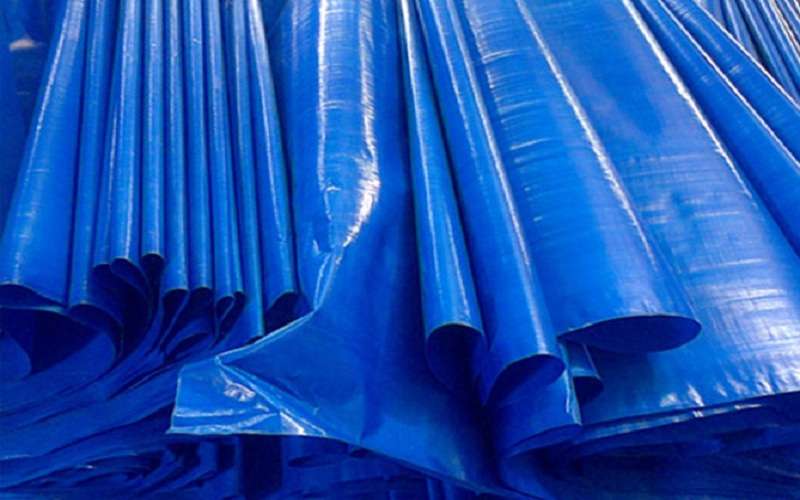Introduction
Since its beginnings, tarpaulin has continuously served as an indispensable instrument for shielding products and equipment from the effects of the weather. Initially, it was a straightforward piece of heavy-duty cloth that was used for the purpose of cover things and safeguarding that they continued to be dry. Tarpaulin, on the other hand, has industrialized into an all-rounder product that might be used for an extensive diversity of tasks as a result of the advancements that have been made concerning current materials and technology. These days, tarpaulin could be made-up from an extensive variety of materials and can be altered to meet the needs of all the precise situation.
In order to make the conservative tarpaulin more long-lasting, flexible, and operative, new technologies and resources have been used, which has given rise to in an extensive transformation of the tarpaulin manufacturers. Old-style tarpaulins were primarily created from materials such as canvas that came with limitations in terms of their weight, permanency, and struggle to the effects of outside services. On the other hand, inventive and original applications of tarpaulin have been discovered by forward-thinking individuals who have gone beyond its typical functions.
To start contemporary tarps are normally fabricated using polyethylene, a plastic material renowned for its water resistance, struggle to UV light, and resistance to mildew. Polyethylene is a strong and longer-lasting material. This lets them to be used for prolonged durations outside, even in very challenging circumstances. Let us check what benefits they offer:
Lightweight: Unlike the heavy canvas tarps of the past, modern tarps are lightweight, facilitating easier movement and handling. The portability of this is particularly advantageous for circumstances such as camping, when movement is crucial.
Waterproofing: By using state-of-the-art waterproofing technology, modern tarps effectively withstand water, therefore safeguarding the covered objects from the impact of rain and excessive moisture. Tarps are often enhanced with strengthened seams and incorporated grommets to enhance their water resistance.
UV Ray Resistance: Modern tarps are pre-treated to inhibit UV degradation. As a result, they can endure prolonged solar exposure without deteriorating, making them suitable for outdoor use over a longer duration.
Customization: Tarps manufactured in contemporary times may be fabricated in various dimensions, shapes, and hues to cater to the specific needs of unique clients. Additionally, it is feasible to customize these objects by including elements like as reinforced corners, D-rings, and attaching mechanisms, therefore enhancing their versatility.
Traditional tarpaulin materials and their limitations
Furthermore, conventional tarpaulin materials sometimes lack the sophisticated characteristics and improvements that contemporary technology may provide. The flame-retardant, UV-resistant, and tear-resistant properties of these materials may not be as pronounced as those found in more recent materials. Consequently, conventional tarps may have difficulties in satisfying the changing requirements of sectors like as development, agriculture, and transportation. It is vital to comprehend the constraints associated with conventional tarpaulin materials in order to fully grasp the progress achieved in the industry through the use of contemporary materials and technology. In summary, the incorporation of contemporary materials and technology has revolutionized the tarpaulin sector, providing consumers with a diverse range of long-lasting, high-performing goods tailored to their individual requirements.
Tarpaulins that are coated correctly have the ability to endure long-lasting and severe exposure to rain, water, snow, dust, and other environmental dangers that are not possible with uncoated versions. However with traditional it is not the same. Let us know its uses
You are on an outdoor excursion and you want something to cover you. In such a place, tarpaulin sheets are used. Tarpaulin sheets are basically the layers of covers which can be used by people. Even business owners can also use this product with ease. If you are in an agricultural field or in a construction stream, using tarpaulin can be of great benefit to you. These tarpaulins can be used for a long time and they are waterproof. You can protect yourself and keep your products safe from various weather conditions. From sunlight, rain to dust and wind, tarpaulins can be used for various purposes and they can be used for a longer period of time. As these tarpaulins prove to be a useful product, they are used in many industrial sectors. With the help of strong, waterproof and coated material.
Main Function of Tarpaulin
Tarpaulin sheets’ core function is to give protection from many environmental factors. The sheets of tarpaulin can be used as an obstacle against UV rays, moisture and humidity. Safeguard your products from getting spoiled due to weather issues with the aid of tarpaulin sheets. Cover a part of your boat, shield your products from sunlight, snow, or heavy rain with the help of tarpaulin sheets. Cover the roofs, construction materials and other equipment.

As the editor of the blog, She curate insightful content that sparks curiosity and fosters learning. With a passion for storytelling and a keen eye for detail, she strive to bring diverse perspectives and engaging narratives to readers, ensuring every piece informs, inspires, and enriches.










